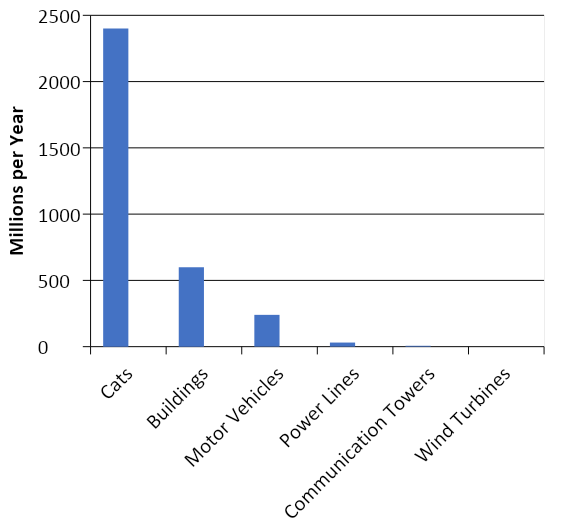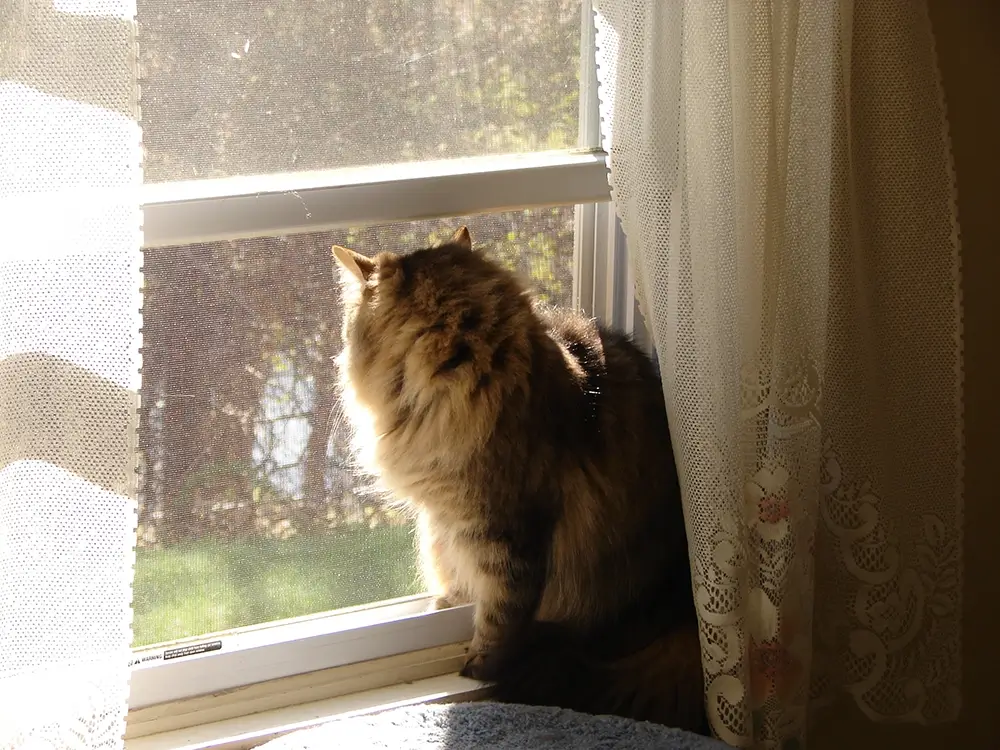

Predation is a natural phenomenon in the wild, whether on nests, young, or adult birds. Decidedly not natural are the populations of native or exotic predators associated with human development, and foremost among these is the domestic cat. The combined numbers of feral and “outdoor” cats are responsible for billions of bird fatalities each year. The situation is exacerbated when feral cats are intentionally fed, resulting in a concentration of potential predators. Even well-fed cats will kill birds and other small animals, and pet cats often find efforts to circumvent belled collars and other ways to make them less efficient hunters. Keeping cats indoors is a very simple solution to this threat, and it’s also better for the cats.
Humans have erected many obstacles in the airspace that birds use, and all of these tend to be fatal when birds fly into them. The majority of collision mortality comes from birds hitting buildings, and not just the windows. Roughly half a billion birds die this way each year in the United States, and while we tend to hear of mass mortality events at glass-covered city skyscrapers, individual homes are just as deadly. Our homes are more likely to have suitable habitat nearby, meaning that birds are present more consistently and the sheer number of houses leads to many dead birds. Bird mortality at windows can be reduced significantly through a number of window treatments and reducing unnecessary light at night.

Tens of millions more birds are killed by collisions with power lines, communication towers, wind turbines, and motor vehicles. The degree to which these threats operate varies depending on conditions, and tends to be higher when artificial light is present and/or when visibility is poor. Most mortality from collisions with buildings and towers likely occurs during migration, when birds are in unfamiliar surroundings and often migrating at night, when they can easily become confused by artificial light. Even if they are not killed outright, confused birds are easy prey for predators such as cats.
Contact Headquarters

National Wildlife Federation Affiliate
Website By CleverLight
Information for the species profiles on this website was compiled from a combination of the sources listed below.
The Birds of New Hampshire. By Allan R. Keith and Robert B. Fox. 2013. Memoirs of the Nuttall Ornithological club No. 19.
Atlas of the Breeding Birds of New Hampshire. Carol R. Foss, ed. 1994. Arcadia Publishing Company and Audubon Society of New Hampshire
Birds of the World. Various authors and dates. Cornell Laboratory of Ornithology.
Data from the Breeding Bird Survey
Data from the Christmas Bird Count